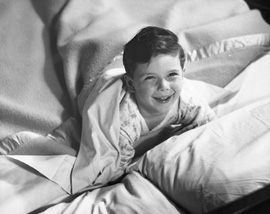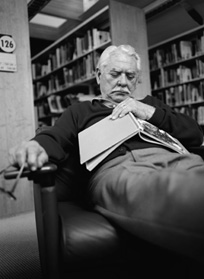 According to the National Institute on Aging, there are some changes in sleep patterns as we get older. In a normal sleep cycle there are two types of sleep. There is rapid eye movement (REM), otherwise known as dreaming sleep, and quiet sleep (non-REM). We each have about four or five cycles of both the REM and non-REM patterns each night. As we age however, the amount of time we spend in the deepest stages of non-REM sleep is less. This is where the label of older people being “light sleepers” comes from.
According to the National Institute on Aging, there are some changes in sleep patterns as we get older. In a normal sleep cycle there are two types of sleep. There is rapid eye movement (REM), otherwise known as dreaming sleep, and quiet sleep (non-REM). We each have about four or five cycles of both the REM and non-REM patterns each night. As we age however, the amount of time we spend in the deepest stages of non-REM sleep is less. This is where the label of older people being “light sleepers” comes from.
Seniors complain about all types of insomnia. These include, taking too long to fall asleep, waking up often during the night or waking up early and not being able to fall back asleep. Contributing factors affecting sleep may be environmental noise, lack of exercise, immobility, caffeine and/or alcohol consumption, medication use and repeated nighttime trips to the bathroom. Frequent daytime naps may also interfere with sleep patterns. Other problems may be medical in nature, such as shortness of breath and leg cramps. Psychological problems, including depression and anxiety, can also rob a person of a good night’s sleep. While sleep patterns differ somewhat as we get older, sleep which is disturbed significantly and waking up tired every day, is not a part of normal aging. Chronic insomnia can often be a symptom of a medical or psychological problem and should be brought to the attention of either a doctor or sleep specialist. Sleep apnea, a serious sleep disorder that causes a person’s breathing to actually stop during sleep, is a common condition that is often overlooked.
Cynthia Lopinto
Latest posts by Cynthia Lopinto (see all)
- Honey Chocolate–Covered Pretzels - April 3, 2018
- True Colors - April 3, 2018
- Spring Cleaning…You’ve Gotta Be Kidding - April 2, 2018
- Should You Stay In Your Home Or Move During Retirement? - April 2, 2018
- Hawaiian Plants For Good Health - April 2, 2018
 Home Front Magazine A Publication for Seniors
Home Front Magazine A Publication for Seniors


